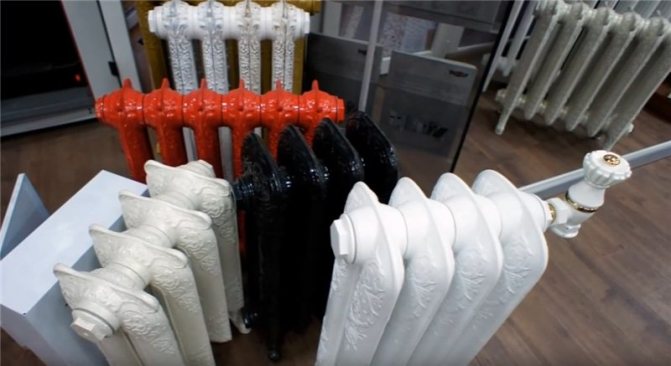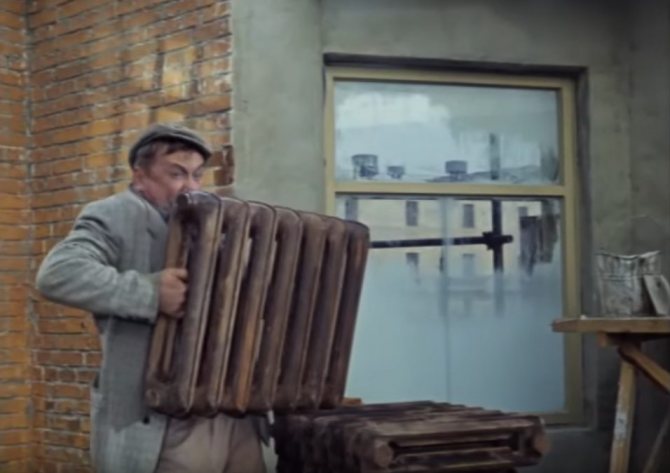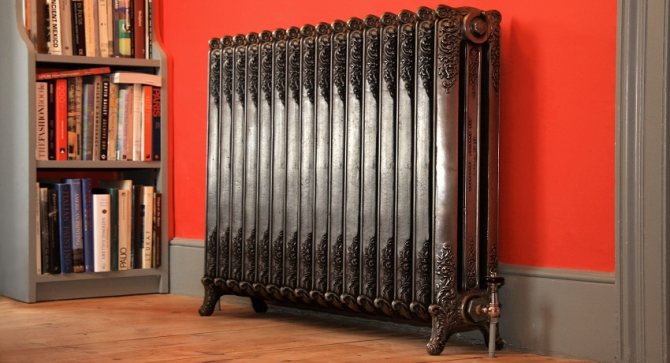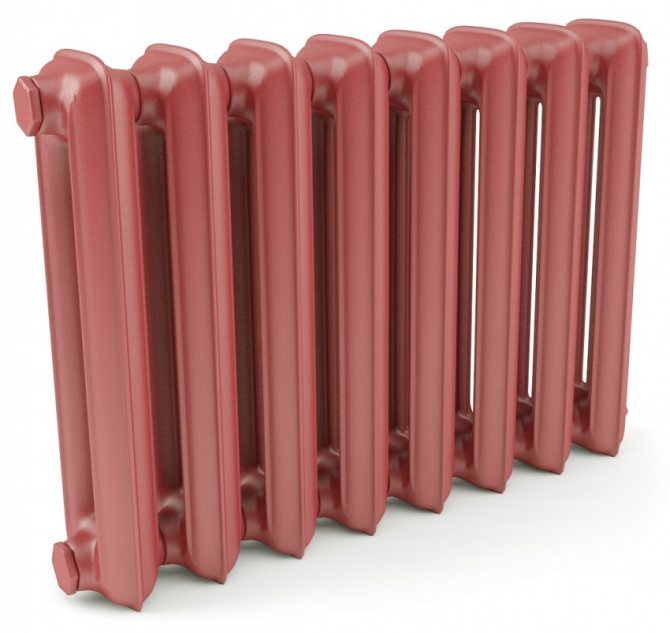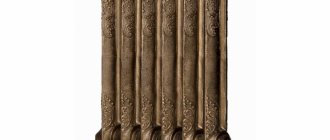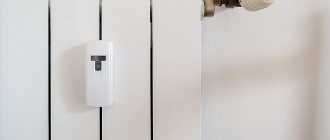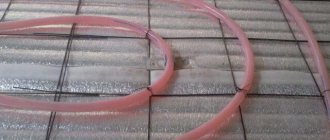What does the weight of the battery matter
It is necessary to have information on how much a cast-iron heating radiator weighs for a number of reasons. For example, if batteries are purchased for installation in an entire private household, it is required to calculate the carrying capacity of a machine transporting heating devices, and you should also decide on the number of movers who will bring them into the house.
For clarity, you can compare the weight of cast-iron radiators of outdated samples and modern analogues made of other materials:
- one section of standard batteries made of cast iron with an inter-axle distance of 500 mm weighs 5.5 - 7.2 kilograms, and with an inter-axle parameter of 300 mm - from 4.0 to 5.4 kilograms;
- the weight of the rib of non-standard cast-iron heating devices ranges from 3.7 to 14.5 kilograms;
- the section of the aluminum battery weighs 1.45 kilograms with an center gap of 500 millimeters, and 1.2 kilograms at 350 millimeters;
- bimetallic devices with a center distance equal to 500 mm weigh 1.92 kg / section, and at 350 mm, 1.36 kg / section.

When carrying out repairs and replacement of heating equipment in a house, it is important for its owners to know how much the old cast-iron battery weighs in order to decide whether it will be possible to independently take out the old multi-section radiator to the street, since it is necessary to calculate their own strength. But there is no such data.
The reason is that there are different models in operation. Moreover, they have the same purpose, but different weight. In addition, devices that differ in size and variety of shapes are sold on the domestic market.
Today, for example, there are more than several dozen names of traditional cast iron batteries, and it is difficult to count models made in a designer style. At the same time, such a parameter as the weight of one section of a cast-iron radiator is very different.
Calculation of the required number of sections in batteries
After determining how much the cast-iron battery weighs, it is necessary to calculate the required number of links in the radiator or the number of devices that must be installed in a separate room. The figure that indicates the volume of the room is multiplied by the heat flow of the room, the resulting figure is divided by the heat flow of one section. Its value is 0.160 kW.
The figure obtained as a result of calculations must be rounded to the nearest integer - this will be the number of required sections. In this case, there is no need to connect all sections into one radiator. It is better to distribute them in several devices, placing one under each window opening. Let's calculate in this way how much the battery weighs. Cast iron weighs much more, we have already found out. It remains to decide on the place to install the radiator.


The size of the window opening also affects the selected number of sections in the installed radiator. To use the full power of the heater, its length must be at least 70-75% wider than the window. In this case, the radiator itself should be located at a distance of 8 to 12 cm from the windowsill.
Weight of standard heaters
Both traditional and designer pieces are united by the material of manufacture, which is cast iron.
And now everywhere there are regularly serving classic accordion-shaped radiators, installed:
- in schools and preschool educational institutions;
- in outpatient departments and hospitals;
- in the premises of the housing stock - apartments, private households, hostels;
- in public and state institutions.
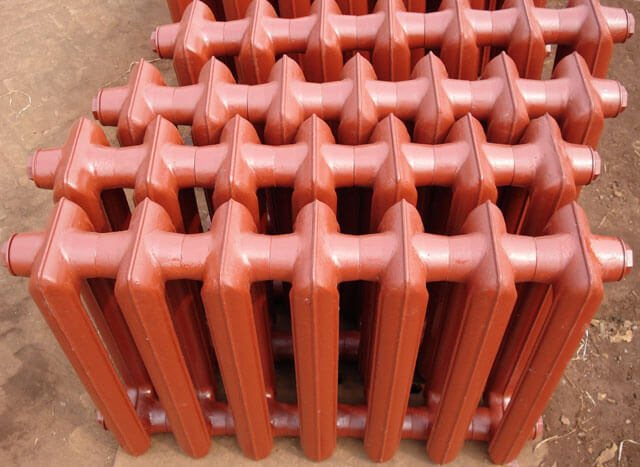

Usually these are models MS-140 or MS-90, since in past years there were no other mass-produced heating devices. Cast iron products NM-150, RKSH, Minsk-1110 and others are presented in small series, but today they are no longer produced. So what is the weight of one section of the old-style cast iron battery? And in this case, there is no exact figure. This is explained by the fact that this value depends on the parameters of the section.
For example, a battery of the MC-140 series can be of two modifications, depending on the center distance, which is 300 or 500 millimeters. If we are talking about the MC-140-300 model, then the average weight of the section is about 5.7 kilograms, and when about the MC-140-500 device, then 7.1 kilograms.
You can often find a product of the MC-90 series, in which the weight of a cast-iron radiator section is 6.5 kilograms with a distance between the axes of 500 millimeters. The difference between the MC-90 and 140 models lies in the different depths of the sections.
Can we assume that the weight of the radiators of these popular series, equal to 6.5, 5.7 and 7.1 kilograms, is final? The answer is no, and there is an explanation for this. The fact is that the current GOST 8690-94, which is a regulatory document regulating the production of batteries from cast iron alloys, indicates their main dimensions.
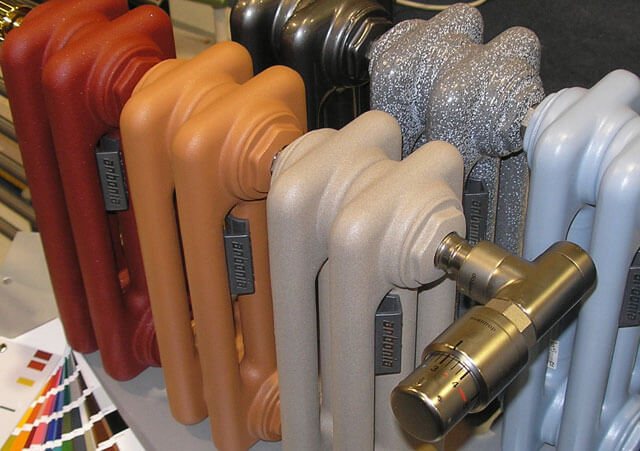

Regarding how much the section of the old-style cast-iron battery weighs, this standard indicates the specific gravity - 49.5 kg / kW. This standard value applies to radiators that are intended for operation in heating systems with a coolant temperature not exceeding 150 degrees at an excess operating pressure of a maximum of 0.9 MPa (9 kgf / cm²).
In the production of heating devices, manufacturers must ensure that the products comply with these values, but GOST does not regulate how much one section of the cast-iron battery weighs. As a result, the mass of radiators manufactured in different factories is different.
Today, the most famous are the products of several industrial enterprises that produce modifications of the MC-140 series and devices of their own design. Among them: the Belarusian plant of heating equipment, the Russian "Descartes" and "Santekhlit" and others.
How are radiators made?
Since the advent of the first cast-iron heater, little has changed in production technology. All modern radiators are made from cast iron alloy. Since the shape of the battery has changed over time, adjustments were made to the production process: the radiator began to be manufactured in sections. After casting, finished products are assembled at the plant. Each section is fastened with the next one using threaded nipples. Therefore, if a leak occurs in the radiator, then it most often occurs either at the place where the device is attached to the heating system, or at the threaded joint of individual sections.
It is interesting!
On these pages you can find out: How much does the piano weigh How much does the bath weigh How much does the brick weigh How much does the "Oka" weigh How much does the ball weigh
The number of sections for radiators can be different, depending on the manufacturer. Cast iron products made in the Czech Republic are produced in ten sections, radiators of the Lugansk Foundry and Mechanical Plant MC140 are produced in four and seven sections. Cast iron batteries were very popular in the USSR. Thin steel radiators, although they were much lighter, often did not cope with heating the room, leaking and flooding neighbors. If a cast-iron radiator was installed in the room, then such a room was the warmest place in the house. Therefore, having engaged in repairs, Soviet citizens tried to change the heating devices for cast iron, taking out a scarce product. In many apartments, despite the large selection of modern heating devices, cast-iron radiators, as before, the owners have very "warm" relations with them.
Unlike their metal counterparts, cast-iron radiators had one more obvious advantage: they were easy to paint. Every owner of living space in an apartment building, at least once, faced the problem of painting batteries. Plate and tubular radiators required annual renewal, and painting them was very inconvenient and time-consuming. With cast-iron radiators, the painting process was much faster, since they did not have "tricky" shapes and small details. Heating devices were supplied from the factory primed, so you could choose any paint color and paint the surface of the battery according to your own taste.
It was not easy for one person to install a cast iron battery. It was not a matter of the complexity of the connection; in order to lift and hold the cast-iron radiator, at least two people were required.
Weight of a section of cast iron radiators from different manufacturers
To figure out how much a section of a cast-iron battery from different companies weighs, you need to familiarize yourself with the assortment they produce:
- Nizhniy Tagil boiler and radiator plant... This manufacturer provides a passport for each of its products, which indicates the number of sections. The company offers 4 cast iron models. At the same time, the exact weight of the section is: for MS-140-M-300 radiators - 5.4 kilograms; MS-140-M2-500 - 6.65 kilograms, MS-90 and T-90 M, respectively 5.475 and 4.575 kilograms.
- Belarusian "Bas-relief"... It produces mainly single-channel sectional radiators, made in a modern design. This manufacturer manufactures 9 models of cast iron batteries, in which the exact weight of the rib ranges from 3.7 kilograms (2K60P-300 products) to 6.7 (MS-140M).
- Russian "Santekhlit"... The company has now been shut down, but its products are still sold in the trade network. The exact weight of the edge of the batteries ranges from 4.45 kilograms (MC-85 and MC-110-300 models) to 7.1 kilograms (MC-140M).
Pros and cons of cast iron radiators
It can be said without exaggeration that the disadvantages of ribbed batteries made of this metal are compensated by their advantages. Let's start with the second:
- Cast iron, although fragile, is strong and durable. Products made from it can easily serve up to 50 years.
- Any radiator made of cast iron perfectly resists corrosion, and therefore is used in networks with a low-quality heat carrier (for example, in central heating systems of apartments).
- Wide choice in appearance. Modern aluminum radiators are clearly inferior to beautiful radiators made of cast iron in various styles - retro, modern, and so on.
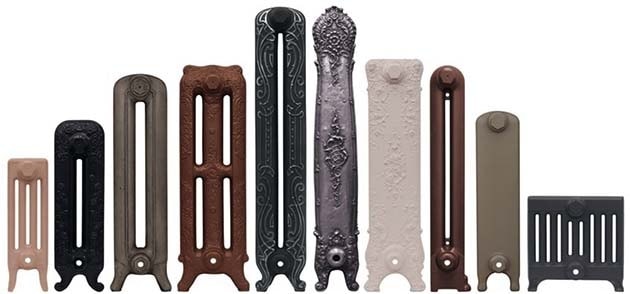

Now for the negative aspects. Considering how much the radiator section of the cast-iron battery weighs (and their mass is calculated in tens of kilograms), the following disadvantages can be distinguished:
- inertia;
- the complexity of installation in terms of fixing to the walls;
- decent cost of heating appliances.
For reference. Some manufacturers have managed to significantly reduce the weight of cast iron radiators and thus improve their technical characteristics, which we will discuss below.
Inertia is a prolonged heating and cooling of heating batteries, resulting from the massiveness of the cast-iron sections and a large volume of water. It takes time to warm up the device body and the heating medium, which makes it difficult to automatically control the temperature in rooms using radiator valves with thermal heads. True, with a sudden shutdown of the boiler, such a system generates heat longer than heaters made of aluminum or bimetal.


Vintage Taps for Retro - Batteries by Carlo Poletti
Heavy radiator sections made of cast iron are difficult to attach to walls built of modern porous materials - aerated concrete and foam blocks, not to mention frame houses and cottages made of SIP panels.You have to bear additional costs in order to buy special brackets for fastening cast-iron heavy radiators and cranes that are suitable in design.
How much does a custom cast iron battery weigh
Now it became clear what the weight of the cast-iron battery of the series common among consumers is. But the characteristics of non-standard devices differ in terms of cost and weight.
For example, one section of a French-made Guratec Apollo 795 three-channel floor-standing radiator weighs 13.5 kilograms. The product is presented for sale with 7-section batteries, the total weight of which is 94.5 kilograms. During its transportation, unloading and installation, the help of several workers is required.
The Czech manufacturer Viadrus produces more affordable products. The weight of the radiator section made of cast iron alloy Kalor 500 × 160 is 5.6 kilograms.
Before being sold on domestic markets, foreign heating devices must undergo a mandatory certification procedure for compliance with GOST standards, but the weight of the section is not taken into account.
Modern heating radiators made of cast iron
For wall mounting, there are new products made of gray cast iron from various manufacturers, whose weight is much less than the traditional MC 140. For example, the Czech heating radiator Viadrus STYL 500, shown in the figure.
Its characteristics are as follows: the mass of 1 section is 3.8 kg, the water capacity is 0.8 liters, and a total of 4.6 kg comes out. With an available heat flux of 140 W for our room of 20 m2, 14 pieces will be required, which by weight will be 64.4 kg together with water. This indicator is 40% less than that of MS 140, and dividing it into 2 parts (32 kg each device), it becomes clear that it is possible to install cast-iron radiators on walls made of porous concrete without special additional notions. An even lighter design is offered by a Russian manufacturer that sells its heating devices under the EXEMET brand, namely the MODERN model.
Here, one section of the radiator weighs only 3.2 kg with a heat transfer of 93 W, 22 sections with a total mass of 70.4 kg are needed in a room of 20 m2. This figure is also quite good, especially considering that the company manufactures these batteries with the possibility of floor installation.
It is impossible not to say a few words about such a product as a vintage cast-iron battery, whose weight is even greater than the Soviet MC 140 and in some cases reaches 14 kg. Their appearance resembles the old ones installed in residences and estates in the distant 19th century.
The EXEMET FIDELIA model shown in the picture has a weight of 12 kg with a heat transfer of 156 W, which makes the total weight of a cast-iron radiator for our example simply monstrous - 154 kg. But as you can see in the image, here the installation issue is solved differently: the first and last sections have legs for placing the heater on the floor.
How much does one section of an old-style cast-iron battery weigh?
Despite the creation of a huge number of new generation heating batteries from various modern materials, cast iron batteries are still able to compete with new models.
To find out how much one section of a cast-iron battery weighs, you need to pay attention to the manufacturer of heating radiators.


Everything new is well forgotten old
Load calculation
Calculation of heat output
It is quite simple to calculate the load on the supporting structures, knowing the weight of one section of the cast-iron battery. For example, let's calculate how much a radiator consisting of 7 sections will weigh. The weight of one section without water is 7.5 kg. Multiplying this figure by the number of cells, we get the weight of an empty battery - 50 kg. This means that the brackets and fasteners used to mount the system must be able to withstand this weight. This is theoretical. In practice, things are a little more complicated.
After the installation is completed, the system is filled with water, which will inevitably lead to an increase in weight and load on the fasteners.The weight gain can vary depending on the volume of the section. On average, the weight of the entire battery after filling the system with coolant will increase by 10–30 kg. The brackets, chosen at the rate of 50 kg, simply cannot cope with the increased load.
The factors that have a negative impact on the fasteners of the system also include the movement caused by the physical processes that occur during the heating and cooling of the coolant.
Specific gravity of a cast-iron battery 1 section (video)
The characteristics of a battery are expressed not only in the number of kilowatts, liters in sections, etc., but also in weight. Whether this parameter is so important to you is a matter of preference. But with proper installation, accurate calculations, a cast-iron radiator will last for many years without any complaints.
Warmth to your home!
Comments (1)
0 Anna 11/30/2017 06:29 AM Of course, in order to install a cast-iron battery, you need more strength and patience, until you bring all the sections into the apartment, you sweat. But on the other hand, they keep the heat longer, even after turning off. we used to have aluminum ones, they quickly got out of order.
Quote
0 Victor 07/07/2017 07:20 I think weight is not at all an important drawback, because you will not need to carry them all the time, but just fix everything in place and let it hang. We still have cast-iron batteries in our house, so they heat up just fine, besides, they keep heat in themselves for a long time, and this is the main thing!
Quote
Refresh comment list RSS feed of comments for this post
How much does one section of an old-style cast-iron battery weigh?
Despite the creation of a huge number of new generation heating batteries from various modern materials, cast iron batteries are still able to compete with new models.
To find out how much one section of a cast-iron battery weighs, you need to pay attention to the manufacturer of heating radiators.
Everything new is well forgotten old
Basic characteristics of a classic radiator
A standard cast iron battery consists of 4-10 individual sections. Its size depends on the choice of the thermal regime in the room and the architectural features of the house.
Despite the difficulties that arise when installing a heavy cast iron heating radiator, this is not considered the main problem. The main task is to carry out the correct installation of the battery. To implement it, it is not enough to know only the mass of the product, it is necessary consider the following points:
- Distance between axles. Standard models can be 350 or 500 mm. Batteries with high heights are characterized by proportional dimensions between the axles.
- Depth. Standard sizes 92, 99, 110 mm.
- Section width. The sizes are in a slightly larger range - 35 - 60 mm.
- Section volume. This is the amount of coolant that is required to completely fill the radiator element. The volume depends on the size of the section. Average values range from 1 to 4 liters.
An important problem with installing a classic cast iron battery is that it is only intended for wall mounting. At the same time, most modern houses made of porous materials... such as aerated concrete, foam concrete, as well as SIP panels with foam filling. These walls require a special fastening of a complex structure with multi-point fixation, which is unlikely to be to your liking.
Weight of imported cast iron radiators
To date, many models of domestic imported production have been put into operation, all of them are classified differently. Many cast-iron batteries of a modern design are designer, imitation in retro style.They can repeat classic designs in terms of functionality and dimensions, but they are significantly superior in aesthetics, adding in mass due to artistic soldering or casting patterns. Many initially have feet for floor mounting, such as Viadrus Termo (Czech Republic).
Without water, the weight of 1 section of an imported cast-iron radiator (indicating the dimensions):
| Dimensions (edit) | Weight, kg |
| 500/95 | 4,35 |
| 500/130 | 5,35 |
| 623/95 | 5,1 |
| 623/130 | 6,45 |
| 813/95 | 6,7 |
| 813/130 | 8,8 |
Sections filled with coolant:
| Dimensions (edit) | Weight, kg |
| 500/95 | 4,95 |
| 500/130 | 6,15 |
| 623/95 | 5,9 |
| 623/130 | 7,45 |
| 813/95 | 7,7 |
An important point: how much water is in the cast iron section
Only one section of this design will hold 5 liters. We are talking about the MS-140A brand. Ten cast iron sections hold 50 liters of water. For comparison: an aluminum radiator, one of its smallest section holds very little, only 0.3 liters of water. And the largest section is no more than a liter.
Many people think that cast iron batteries are something from the retro series, they are no longer produced. But if you notice that such radiators serve well in hospitals, clinics, schools and gardens. They are everywhere, and some owners, on the contrary, tend to change the models of the new model to the usual cast iron ones.
Aluminum or cast iron?
A long-liver - a cast-iron radiator, has both advantages and disadvantages in comparison with modern competitors.
- Cast iron is highly resistant to corrosion. The basic coolant in the water heating system is water, which is supplied from the CHP plant through multi-kilometer pipes to the elevator units of houses and industrial buildings. Many heating mains have been laid for a long time and debris and rust accumulate in them. Cast iron parts of the heating main "firmly" tolerate these negative factors and serve for many years, unlike many modern materials. Cast iron plumbing fixtures are resistant to water hammer.
- Long service life. Cast iron radiators are designed for a service life of 50 years, provided they are periodically flushed and cleaned.
- A real find for stylists and interior designers. Fits perfectly into retro-style rooms.
- High energy consumption is more of a disadvantage of batteries than an advantage. Cast iron batteries have a long period of both heating and cooling of the surface. When calculating the overall energy efficiency, cast iron appliances are inferior to the leading heating appliances of the modern generation. And yet, their use, when connected to central heating networks, is considered appropriate.
- Considerable weight. When calculating the number of sections, the total weight of the heat source must be taken into account. If the fastening of a cast-iron radiator weighing more than 50 kg is carried out in a solid concrete or brick wall, then fasteners with a large section are sufficient. When fastening in other types of structures, additional fasteners are required. If the installation rules are violated, the integrity of the wall and its supporting elements may be violated.
Now you not only know how much a cast-iron battery weighs, but also all its advantages and disadvantages.
calcsoft.ru

